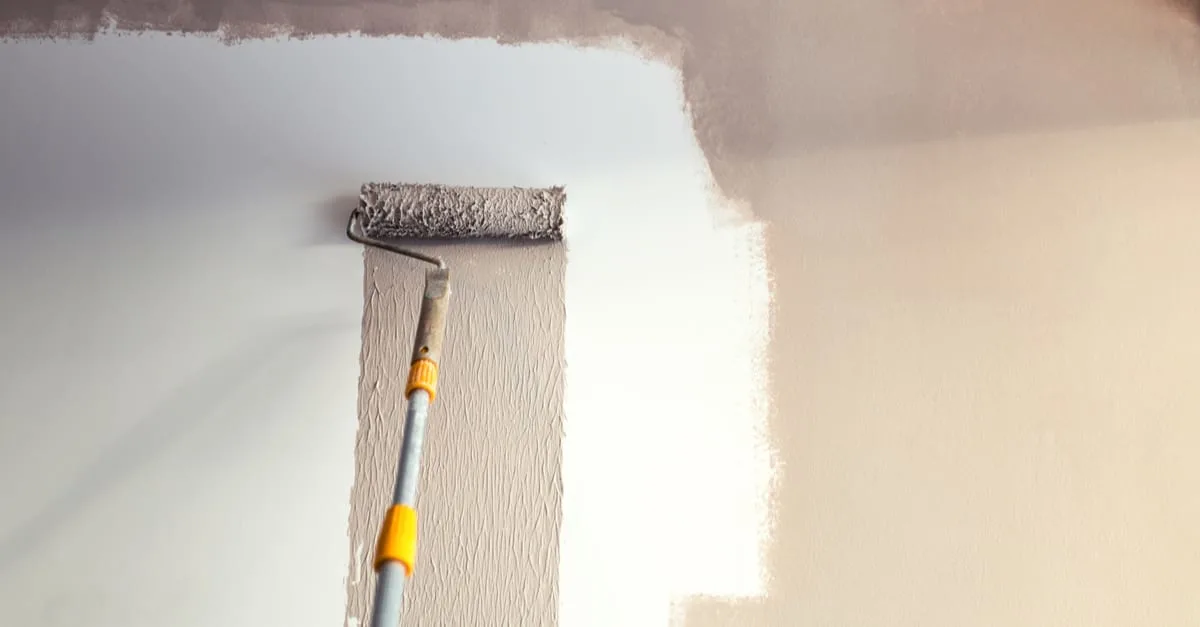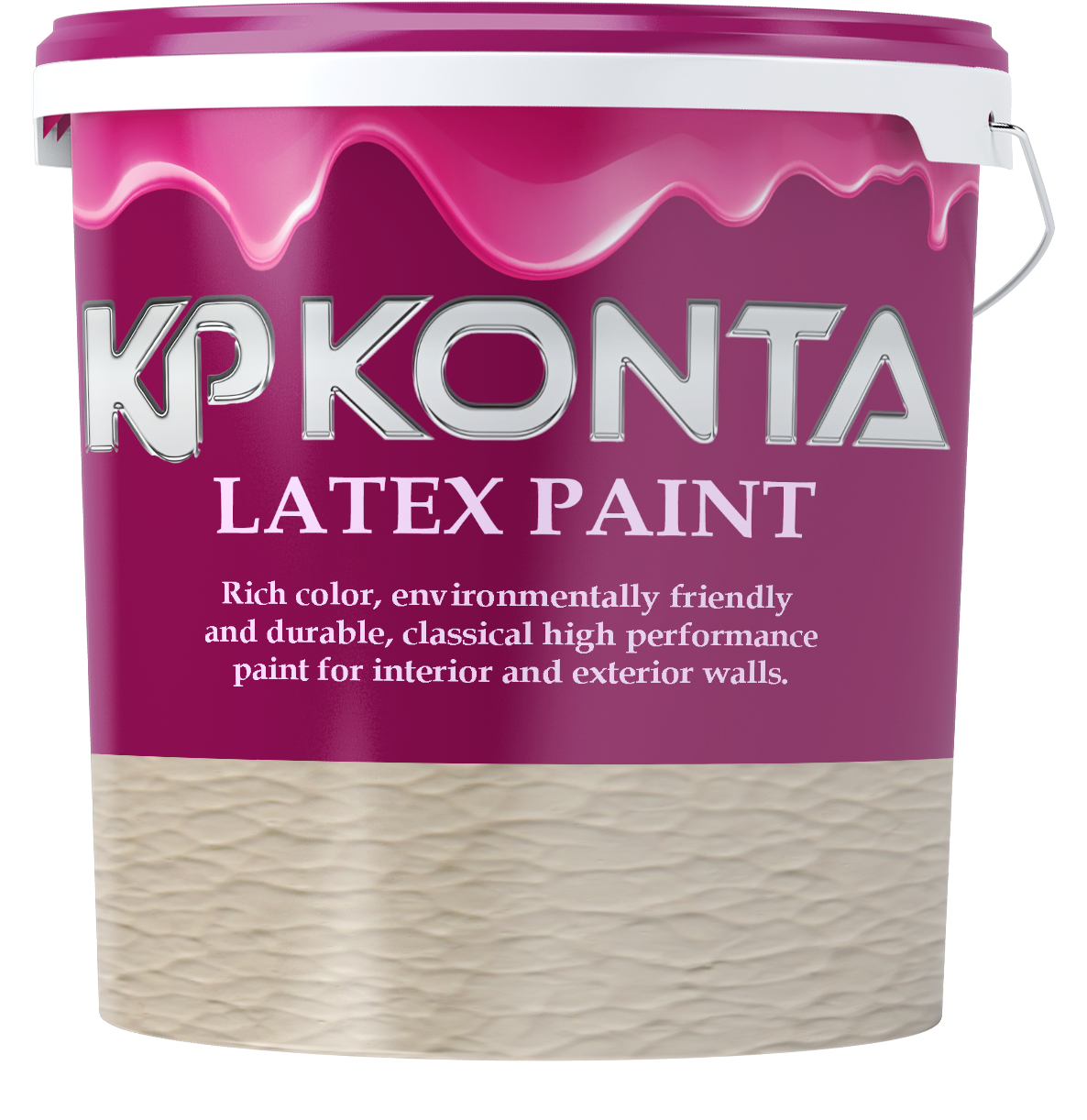KONTA LATEX PAINT
$50.00 – $1,000.00
KONTA Latex paint becomes more popular as time goes on. This widely used paint is versatile, easy to apply, and more environmentally friendly than its oil-based cousins.
One way latex paints are differentiated is by the binder they use. Although modern water-based paints don’t use natural rubber later, they are still often referred to and sold as latex paints.
Many water-based paints use a vinyl-acrylic blend as the binder. KONTA PAINT is less costly than other formulations and is suitable for interior walls.
Product Description
Why Use Latex Paint?
When you are getting ready to tackle a painting project, the first choice is what type of paint you’ll use. The oldest paintings, dating from 65,000 years ago, used mineral pigments smeared on the rock.
Today, latex-based paint is the most common type of paint used for interior and exterior painting of walls and similar surfaces. About 75 percent of paint sold is latex, and the percentage has been climbing for years.
There are good reasons for using latex for your paint job. Latex is easy to use and durable. It emits fewer gases when drying compared to the oil-based paint which is the main alternative.
Latex is also inexpensive and available in different colors and formulations for any use. It is washable and available in many finishes, from matte to high gloss.
Paint Basics
Over the millennia, we have developed a vast number of different types of paints for many different uses.
You can get paints specially formulated to make masonry waterproof, protect roofs from mildew, and do many other jobs.
If you can think of something you’d like a coating to do, there is probably a paint available with a special ingredient to do it. Most coatings for house painting have four main ingredients:
- Solvents
- Binders
- Pigments
- Solids
The solvent keeps ingredients dissolved in a liquid so they can be applied to the surface. For latex paints, the solvent is water. For oil-based paints, it’s an oil such as linseed oil.
Binders are plastic-like substances that make the surface of the paint tough when it dries.
KONTA Latex paint originally used natural rubber, or latex, as the binder. Today, the natural rubber in latex paint has been replaced with synthetic compounds such as acrylic or vinyl.
Latex Paint Features

Latex paint is popular for a variety of reasons, but its ease of application and low maintenance stand out.
Easy to Apply
One of latex paint’s best features is how easy it is to apply. It brushes on smoothly and evenly. Compared to oil-based paint, the brush drags less.
Less Mess
Latex paint is also much easier when it comes to cleaning up after the job. All it takes is water. Even partially dried latex paint can be removed with soap and some elbow grease.
Short Dry Times
Another big plus with latex paint is the reduced drying time required for each coat. You can re-coat a latex-painted wall in just one to six hours after applying it.
Versatile
Latex paint is highly versatile and will work on a wide variety of surfaces. You can use latex successfully on wood, drywall, vinyl or aluminum siding, concrete, brick, stucco, and other surfaces.
Latex sticks very well to all these surfaces. Plus, compared to oil paint, after drying and over time, it retains more flexibility and elasticity. It’s less subject to cracking, blistering, flaking, and peeling.
In some situations, latex is the best paint. Latex is used for painting wood that will be exposed to freezing temperatures.
New stucco and masonry generally call for latex. And if you’re painting weathered siding, whether aluminum or vinyl, latex is the first choice.
Weather Resistant
If the surface you’re painting is going to be exposed to direct sunlight, latex is likely to be your best choice. It’s more resistant to fading and becoming chalky than oil-based paint.
If mildew is likely to be an issue, latex has better built-in resistance than oil paint. Mildewcide is often added to both types of paint to reduce susceptibility to mildew further.
Latex and oil-based paints both have distinctive odors. But latex is much less smelly than oil-based paints. And oil-based paint will continue emitting odorous gases for many hours after being applied.
Environmentally Friendly
With oil-based paint, those odors are composed of volatile organic compounds (VOCs).
Safety concerns about VOCs have led to increased regulation of products, including paints, that contain them. That’s another reason latex paint is becoming more popular.
Oil-based Paint vs Latex Paint

Perhaps it’s best to illustrate the benefits of latex paint by comparing it to traditional oil-based paints. Read on to learn why latex wins every time.
Stickier
Oil-based paint does have some superior characteristics compared to latex competitors. For instance, it sticks better on some surfaces.
If you get a powdery substance on your hand when you run it over a surface you are re-painting, oil paint may be a superior choice. Oil-based paint sticks better to chalky, old paint.
Chalkier
On the other hand, oil-based paint is more likely than latex paint to become chalky itself. It is also more likely to fade when exposed to the sun.
Chips Easier
If you’re painting an exterior surface, think twice before using oil-based paint. And in interior applications, yellowing and chipping are bigger issues with oil-based paint than with latex paint.
Trickier to Apply
Oil-based is a little trickier to apply since the brush tends to drag more when putting it on. However, it’s easier to use a thicker coat with oil-based paint as well.
This means it’s easier to get one-coat coverage with oil-based paint. If covering in a single coat is a primary concern, an oil-based paint may give better results.
Requires Prepping
Oil-based paint is, like latex, suitable for covering many types of surfaces. However, with some surfaces, pre-treatment is required. If you’re painting galvanized metal or new concrete, stucco, or other masonry, you should use a sealer before applying oil-based paint.
More Mess
Cleanup is a significantly bigger hassle with oil-based paint. You can’t just use water and perhaps some mild soap, as you can with latex paint.
Instead, it takes turpentine, mineral spirits, or paint thinner to clean brushes, pans, and drips. After you’re done, you’ll have thinner-soaked rags that must be disposed of carefully to avoid fire risk.
Longer Dry Times
Also, instead of drying in a few hours, oil-based paint requires at least eight to 24 hours to dry. It may be a day or two before you can recoat a surface you have covered with oil-based paint.
So, Should You Use Latex Paint?
Compared to oil-based paint, latex paint is easier to apply and clean up and less likely to crack and fade.
It dries faster and emits fewer potentially harmful gases. If you’re painting an interior or exterior wall or other items, this should be your first option.
Related Products
Related products
-
LATEX PAINT
KONTA LIQUID GRANITE PAINT
$50.00 – $1,000.00 This product has multiple variants. The options may be chosen on the product pageRated 0 out of 5 -
GRANITE PAINT
KONTA GRANITE PAINT
$50.00 – $1,000.00 This product has multiple variants. The options may be chosen on the product pageRated 0 out of 5 -
GRANITE PAINT
KONTA GRANITE PAINT
$50.00 – $1,000.00 This product has multiple variants. The options may be chosen on the product pageRated 0 out of 5 -
GRANITE PAINT
KONTA TEXTURE PAINT
$50.00 – $1,000.00 This product has multiple variants. The options may be chosen on the product pageRated 0 out of 5





